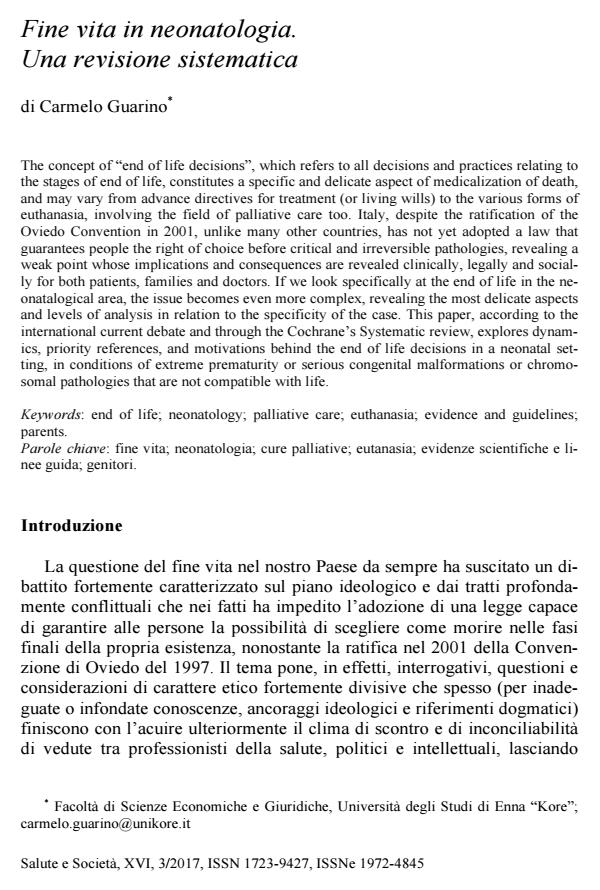Fine vita in neonatologia. Una revisione sistematica
Titolo Rivista SALUTE E SOCIETÀ
Autori/Curatori Carmelo Guarino
Anno di pubblicazione 2017 Fascicolo 2017/3
Lingua Italiano Numero pagine 14 P. 31-44 Dimensione file 83 KB
DOI 10.3280/SES2017-003004
Il DOI è il codice a barre della proprietà intellettuale: per saperne di più
clicca qui
Qui sotto puoi vedere in anteprima la prima pagina di questo articolo.
Se questo articolo ti interessa, lo puoi acquistare (e scaricare in formato pdf) seguendo le facili indicazioni per acquistare il download credit. Acquista Download Credits per scaricare questo Articolo in formato PDF

FrancoAngeli è membro della Publishers International Linking Association, Inc (PILA)associazione indipendente e non profit per facilitare (attraverso i servizi tecnologici implementati da CrossRef.org) l’accesso degli studiosi ai contenuti digitali nelle pubblicazioni professionali e scientifiche
The concept of "end of life decisions", which refers to all decisions and practices relating to the stages of end of life, constitutes a specific and delicate aspect of medicalization of death, and may vary from advance directives for treatment (or living wills) to the various forms of euthanasia, involving the field of palliative care too. Italy, despite the ratification of the Oviedo Convention in 2001, unlike many other countries, has not yet adopted a law that guarantees people the right of choice before critical and irreversible pathologies, revealing a weak point whose implications and consequences are revealed clinically, legally and socially for both patients, families and doctors. If we look specifically at the end of life in the neonatalogical area, the issue becomes even more complex, revealing the most delicate aspects and levels of analysis in relation to the specificity of the case. This paper, according to the international current debate and through the Cochrane’s Systematic review, explores dynamics, priority references, and motivations behind the end of life decisions in a neonatal setting, in conditions of extreme prematurity or serious congenital malformations or chromosomal pathologies that are not compatible with life.
Parole chiave:Fine vita; neonatologia; cure palliative; eutanasia; evidenze scientifiche e linee guida; genitori.
Carmelo Guarino, Fine vita in neonatologia. Una revisione sistematica in "SALUTE E SOCIETÀ" 3/2017, pp 31-44, DOI: 10.3280/SES2017-003004